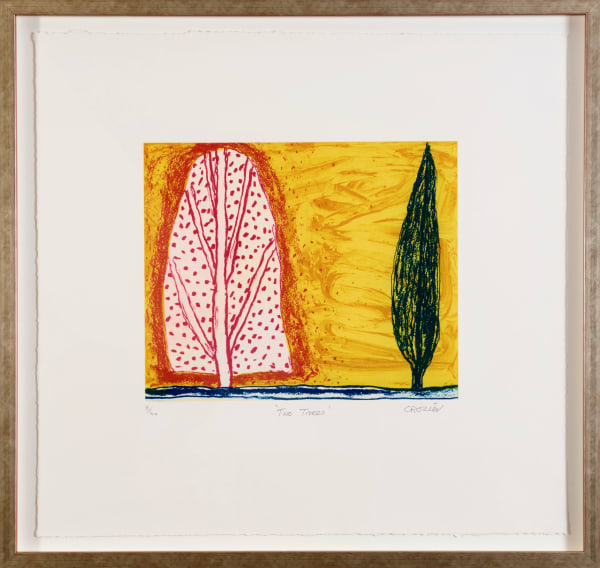William Crozier
-
 Larios, 2010
Larios, 2010 -
 Two Trees, 2006
Two Trees, 2006 -
 Garden (Green), 1998
Garden (Green), 1998 -
 Garden (Pink), 1998
Garden (Pink), 1998 -
 Downeen, 1998
Downeen, 1998 -
 Kernel III, 2010
Kernel III, 2010 -
 Kernel IV, 2010
Kernel IV, 2010 -
 Kernel VI, 2010
Kernel VI, 2010 -
 Kernel II, 2010
Kernel II, 2010 -
 Kernel V, 2010
Kernel V, 2010 -
 Kernel Series (Set of 6), 2010
Kernel Series (Set of 6), 2010 -
 Solent Night, 1997
Solent Night, 1997 -
 Labyrinth, 2007
Labyrinth, 2007 -
 Meon Shore I, 1997
Meon Shore I, 1997 -
 Meon Shore II, 1997
Meon Shore II, 1997 -
 Might, 1995
Might, 1995 -
 Garden, 1995
Garden, 1995 -
 Turk Head, 1994
Turk Head, 1994 -
 Harvest, 1994
Harvest, 1994 -
 Dark Orchard, 1998
Dark Orchard, 1998
William Crozier (1930 - 2011) is one of the foremost landscape painters of the 20th century, who gained an equal reputation in Britain and Ireland for his distinctive, expressive use of colour. Inspired by the landscape, still life and the human figure, he drew on these subjects not for description or topography but to create images that evoke a state of mind.
Born in Yoker, near Glasgow, of Irish parents, William Crozier studied at Glasgow School of Art from 1949-53. On graduating he spent formative periods in Paris, Dublin and southern Spain before settling in London, where he made his reputation. The early paintings which brought him to critical attention in the late 1950s and 60s were influenced as much by post-war existentialist philosophy as they were by contemporary French, American and British painting.
From the 1980s, when he set up studios in Ireland and England, his work blossomed with an extraordinary radiance that took its inspiration from eastern European as well as western art. In his own words, Crozier painted 'objects or landscapes which excite or delight after long familiarity'. He exhibited widely in the UK, Ireland and continental Europe and gained great acclaim. He was awarded the Premio Lissone in Milan and the Oireachtas Gold Medal for Painting in Dublin and his work may be seen in every major public collection in Britain and Ireland, including the Tate Gallery and the National Galleries of Scotland and Ireland.
William Crozier's prints are unmistakably the work of a painter. As a young artist in the 1960s and 70s he rarely editioned his etchings and lithographs and often worked in monotype, preferring the immediacy of a painterly technique to the slower, sequential processes of printmaking. However, from the 1990s when he was introduced to the Graphic Studio and the Stoney Road Press, both in Dublin, he rediscovered printmaking as a means of creating a distinctive, graphic image of the landscape, using lithography and carborundum intaglio techniques. He came to relish his relationships with the printers in Dublin, notably James McCreary, James O'Nolan and Robert Russell, enjoying the iterative exchange between artist and printer working closely together as a respite from the isolation of painting in the studio.
Towards the end of his life, in 2007, he was introduced to the Berardinelli family of printers in Verona and here, too, his printmaking advanced in the company of a family of printers devoted to colour and texture in print.
Ref: 'William Crozier' ed. Crouan, K with essays by Kennedy, SB and Vann, P. Lund Humphries, London 2007




















